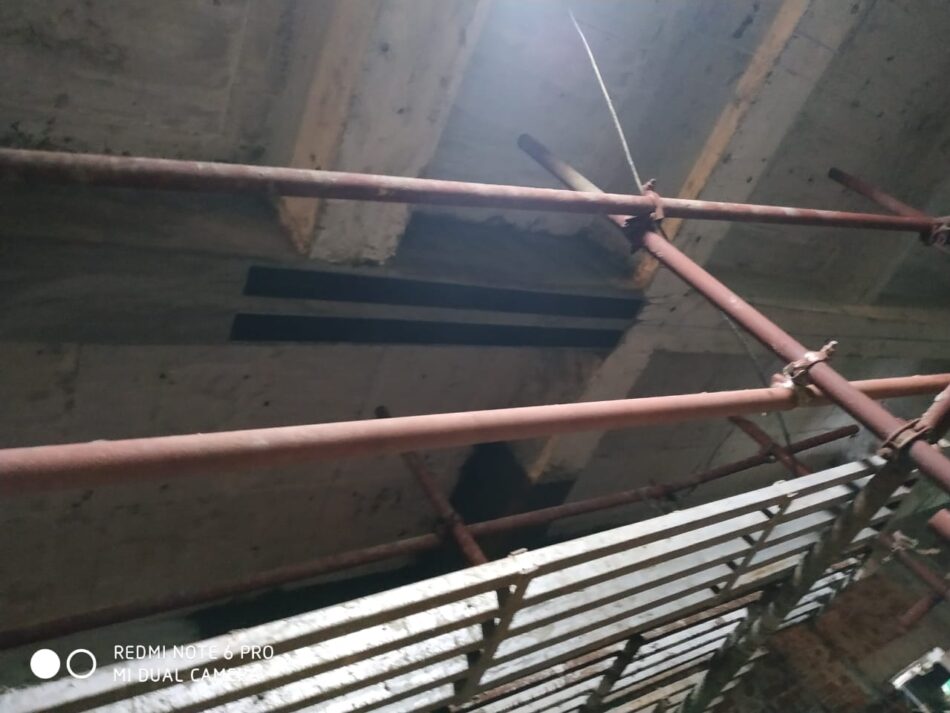Buildings, like any other man-made structure, face wear and tear over time. Cracks, weakened beams, corroded reinforcement, and foundation issues can compromise safety if left unattended. Structural repairs are essential to restore the stability and durability of residential, commercial, and industrial properties. This process not only fixes visible damage but also addresses underlying problems that could lead to serious risks if ignored.
Why Structural Repairs Are Important for Every Property
Ignoring signs of structural damage can result in costly consequences. A small crack today could be a major repair tomorrow if not addressed promptly. Structural repairs maintain the safety of occupants, prevent further deterioration, and extend the life of a building. From repairing concrete beams to reinforcing columns, timely intervention ensures that the property remains secure against environmental factors, heavy loads, and unexpected structural stresses.
Common Signs Your Building Needs Structural Repairs
Early detection plays a key role in minimizing repair costs. Some common indicators include wall cracks, uneven floors, sagging roofs, and water leakage through structural joints. Rusted reinforcement bars, crumbling concrete, and bulging walls are also warning signs. In some cases, doors and windows may no longer close properly due to structural shifts. If you notice these signs, a professional building inspection is crucial to determine the repair needs.
Types of Structural Repairs in Buildings
Structural repair methods vary depending on the type and extent of damage. Concrete repair, foundation strengthening, beam and column rehabilitation, and waterproofing are among the most common. Carbon fiber wrapping is often used for strengthening without adding significant weight. Epoxy injection repairs cracks, while jacketing increases load capacity. Each method is chosen based on the structure’s design, usage, and the severity of damage detected during inspection.
Concrete Structural Repairs for Long-Term Durability
Concrete is one of the most used materials in construction, but it is also vulnerable to cracks, spalling, and reinforcement corrosion over time. Concrete structural repairs involve cleaning damaged areas, replacing deteriorated sections, and applying protective coatings. High-quality repair materials ensure that the restored section matches the original strength. This helps maintain load-bearing capacity and prevents further moisture ingress, which is a common cause of concrete deterioration in humid or coastal areas.
Foundation Repair: The Backbone of Structural Integrity
A building’s foundation is responsible for supporting its entire load. If the foundation weakens due to soil erosion, poor construction practices, or seismic activity, the stability of the structure is at risk. Structural repairs to foundations may include underpinning, soil stabilization, and sealing cracks to prevent water intrusion. Advanced methods like micro-piling are used to reinforce foundations without causing major disruption to the building’s operations.
Column Strengthening for Enhanced Load Capacity
Columns are vertical load-bearing members that transfer building weight to the foundation. Over time, they may lose their strength due to corrosion, overloading, or poor maintenance. Column strengthening techniques like steel jacketing, fiber-reinforced polymer wrapping, and concrete encasement can significantly improve structural capacity. This ensures that the building can withstand increased loads, which is often necessary during renovation, expansion, or change in building usage.
Beam Rehabilitation to Prevent Structural Failure
Beams are critical in distributing loads across a structure. When they weaken, it can lead to partial or complete structural failure. Repairing damaged beams involves removing loose concrete, replacing corroded reinforcement, and using high-strength repair mortar. In some cases, external prestressing is applied to improve load-bearing capacity. By addressing beam issues early, building owners can avoid costly damages and ensure long-term safety.
Waterproofing in Structural Repairs
Water infiltration is one of the leading causes of structural damage. Moisture accelerates corrosion in steel reinforcement and leads to cracks in concrete. Waterproofing during structural repairs involves applying protective coatings, installing drainage systems, and sealing expansion joints. This not only prevents future damage but also protects the building from mold growth and dampness. Waterproofing is especially important for basements, parking structures, and buildings in high rainfall areas.
Modern Techniques in Structural Repairs
Advancements in construction technology have introduced faster and more effective repair solutions. Non-destructive testing helps identify hidden structural issues without causing damage. Fiber-reinforced polymer composites are lightweight yet strong, making them ideal for retrofitting. Shotcreting is used for large-scale concrete restoration, while epoxy injection is perfect for fine cracks. These modern methods reduce repair time, minimize disruptions, and extend the building’s service life.
Choosing the Right Contractor for Structural Repairs
Selecting an experienced and reputable contractor is crucial for ensuring repair quality. Look for professionals with expertise in structural engineering, proven project history, and familiarity with advanced repair techniques. Always request a detailed inspection report and a transparent cost estimate before starting work. A good contractor will use high-quality materials and follow safety standards, ensuring that the repair work enhances the building’s long-term performance.
Preventive Maintenance to Avoid Future Structural Damage
Preventive maintenance is the most effective way to avoid major structural repairs. Regular building inspections, timely crack sealing, and ensuring proper drainage can prevent small issues from becoming major problems. Keeping up with maintenance not only saves money but also increases property value. For older buildings, periodic structural audits can help detect early signs of deterioration and allow for quick corrective action.
Structural repairs are not just about fixing visible damage—they are about ensuring the long-term safety, stability, and value of your property. With timely intervention, modern repair techniques, and skilled contractors, even severely damaged structures can be restored. Whether it’s foundation strengthening, concrete restoration, or waterproofing, addressing structural issues early guarantees peace of mind and a secure environment for years to come.



